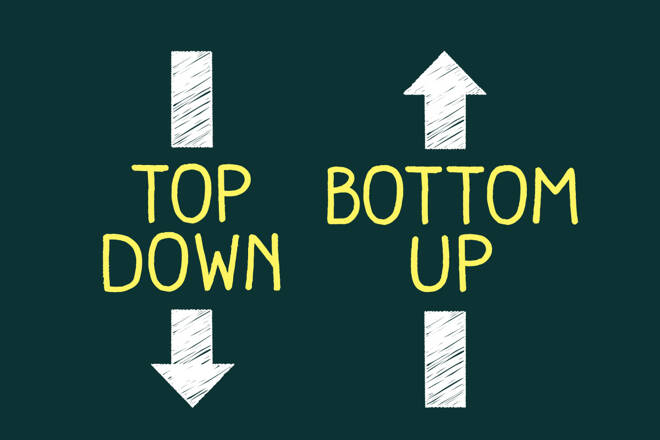Advertisement
Advertisement
The Benefits of Bottoms up Investing
By:
Intro
Bottom-up investing is an investment style in which an investor focusses on the fundamental of an individual company. This approach focuses on the analysis of individual stocks. Investors who employ a bottom up style focus on a specific company rather than an industry or macro environment.
The bottom-up style assumes that individual companies can perform well despite the performance of their industry or the current economic climate. When using a bottom up style an investor needs to understand how a specific company generates returns, by having knowledge of revenue production along with expense management. Investors need to become familiar with products and services offered by a specific company, along with understanding the company’s assets, liability’s and income.
How is it Different
As describe the bottom up approach focuses on the performance of an individual company. The process ignores the economic environment or a macro approach. A differing approach known as top-down focuses on the environment more than the performance of a company.
A top-down style would examine the fundamental of an industry or the overall economy. This could include sector analysis which involves understanding the demand for a product or service for a particular industry. Investors that use a top down approach might examine economic data points, which include Gross Domestic Product or the Non-farm payroll report. They might also look at how a specific commodity such as oil would affect a driller, or how the change in a currency rate would affect an industry. Another type of top down analysis is the analysis of monetary policy. This type of analysis would analyze the likelihood of a central bank to increase or decrease interest rates, or chance their normal cash operations.
The methods
Understanding management structure, the company’s finances, and there products or services is tantamount to bottoms up investment success. Understanding the critical financials of a company is crucial to the bottom up investing approach. There are a number of key statistics and ratios which include revenues, EBITA, earnings per share which allow an investor to compare performance amongst a number of different companies.
Investors who focus on bottom up investing need to understand a company’s products and services and determine if they are efficiently allocating capital to the most profitable revenue producer.
If a company is focusing to increase lines of business and investing into the profitable businesses, they could be candidates for further research. Each company will require a different set of factors that help and investor determines if the company is an appropriate investment. For example, a manufacturing company would require a different evaluation matrix relative to a financial institution.
Cash flow is an important indicator of the health of a company. Free cash flow is cash on hand after maintaining the asset base of the company. When companies have free cash flow they have the capital to expand or invest in other businesses. Investment into other lines of business or increasing a specific line by purchasing a direct competitor is an important factor when evaluating a company profile.
Pro’s & Con’s
Bottom-up investing allows an individual to become very familiar with a business in which he plans to invest capital. In essence this approach is similar to running your own business and determines if the approach by management is in line how you would run your business to generate the most efficient returns. Many company’s pay dividends to investors which is attractive to most considering stock investments. The downside to bottoms up investing is the amount of time it takes to research and analyze the workings of an individual company.
About the Author
David Beckerauthor
David Becker focuses his attention on various consulting and portfolio management activities at Fortuity LLC, where he currently provides oversight for a multimillion-dollar portfolio consisting of commodities, debt, equities, real estate, and more.
Advertisement
Table of Contents
Advertisement
Advertisement
Advertisement
Advertisement
